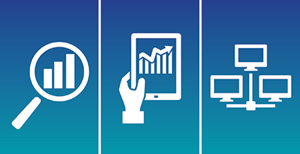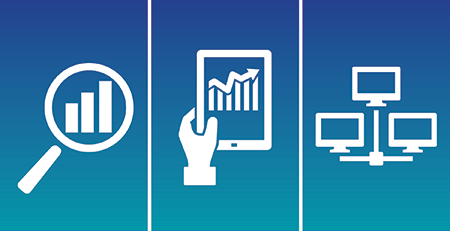The private sector has long understood the power of data analytics. Across industries, companies are able to immediately see a measurable return on investment (ROI) in technology and data collection processes that help them gather rich, timely information on their operational performance, customer behavior, and trends in the marketplace.
Although the ROI that data analytics can deliver to organizations in the public space requires more complex calculations, it can lead to equally powerful results. We and our peers in the research and analytics community need to do a better job of helping public agencies understand how data analytics can enhance their mission to improve lives.
In attending the recent Data Governance & Information Quality (DGIQ) conference, I was reminded of the gap between the private and public sectors in their capacity to manage data and benefit from their value. 
During the weeklong conference, more than 90 speakers presented on the latest tools and technologies that support rigorous data stewardship, automated data quality assessments, master data management, and agile data governance. These presentations underscored the significance of advances made in this field over the past five years.
For example, all service organizations—public and private—must ensure that information associated with a given individual is accurate and correct. Data associated with me includes my name—Daniel B. Shapiro—and associated attributes such as my education, job history, address, etc. It is important that organizations, and the information systems supporting them, recognize that I am not Daniel B. Shapiro, U.S. ambassador to Israel. Addressing this type of data quality issue is not a trivial challenge. As our society becomes more dependent on disparate information sources, problems with data quality can become rampant. To address these issues, organizations have evolved their practices.
Presenters at the DGIQ conference provided numerous examples of how they have made the business case for investments in these technologies and processes to enable rigorous data governance and achieve value. Representatives from Caterpillar, eBay, and Blue Cross Blue Shield, to name just three, described how funding data quality initiatives enabled them to address operational challenges in their respective industries. By leveraging increased knowledge of customer behavior and analyzing myriad data sources, private businesses can tailor marketing and service offerings to discrete groups of consumers—sometimes down to the individual level.
Unlike private for-profit companies, federal and state agencies providing health and human services programs are not driven by the demands to increase their bottom line. Performing a conventional cost-benefit analysis of the value of high quality data is not as straightforward for agencies that are organized to improve public well-being rather than maximize profit. However, empowering agencies to better understand the needs of their clients and how to more efficiently serve participants can be life changing to those in need.
Although each organization has its own calculations, here are three general themes that every organization in the public sector should consider when thinking about making investments in data analytics technology:
- Will it enable us to do more cost-effective analysis and allocate some of our precious resources elsewhere?
- Will it improve the speed of our analysis to help us more quickly deliver services to those in need?
- Will it improve the quality of our operational insights, helping us to better manage and administer programs?
Mathematica is working with a wide range of clients to address fundamental data issues and unlock the benefits that can be delivered through high quality and well-managed data. One example is the Centers for Medicare & Medicaid Services (CMS), which is supporting work that is explicitly designed to improve data quality. This effort will help CMS be a better steward of our health care dollars and help improve lives.
As more public agencies take stock of the potential value to be mined from their data sources—and they realize that, like private companies, they can leverage data in cheaper, faster, and better ways—I am confident that the data quality gap between market-driven and mission-driven organizations will narrow.



